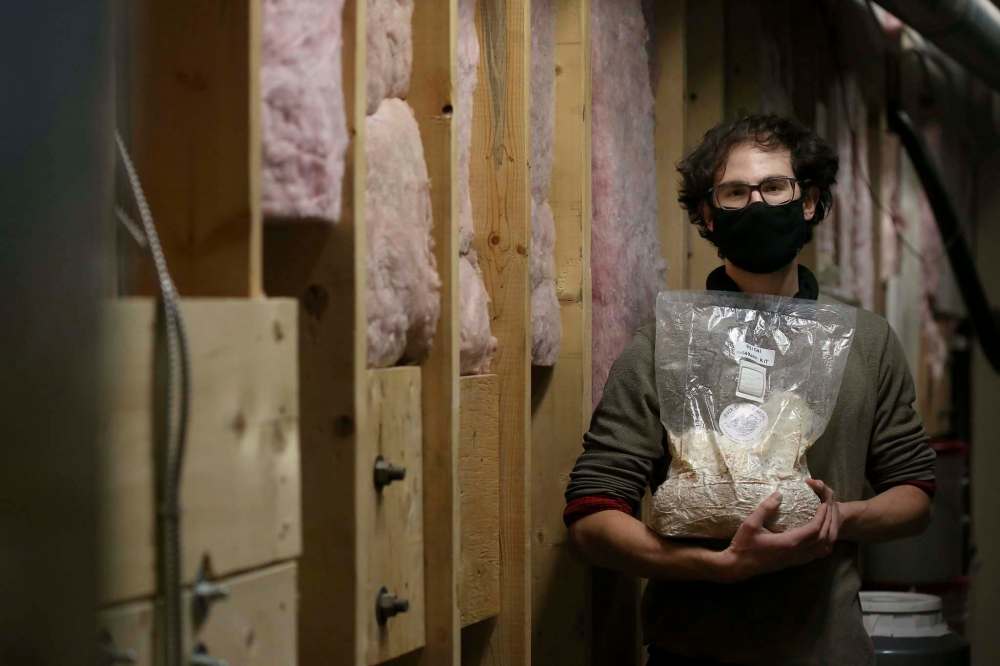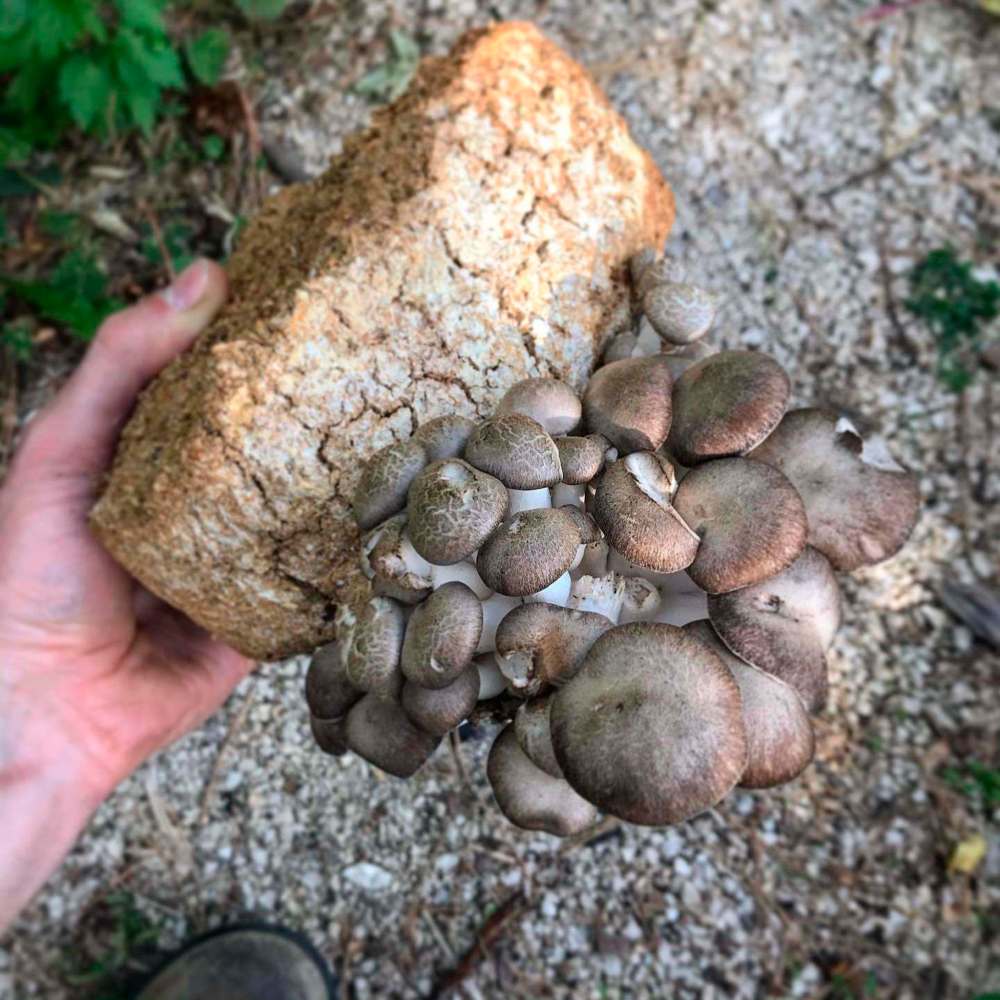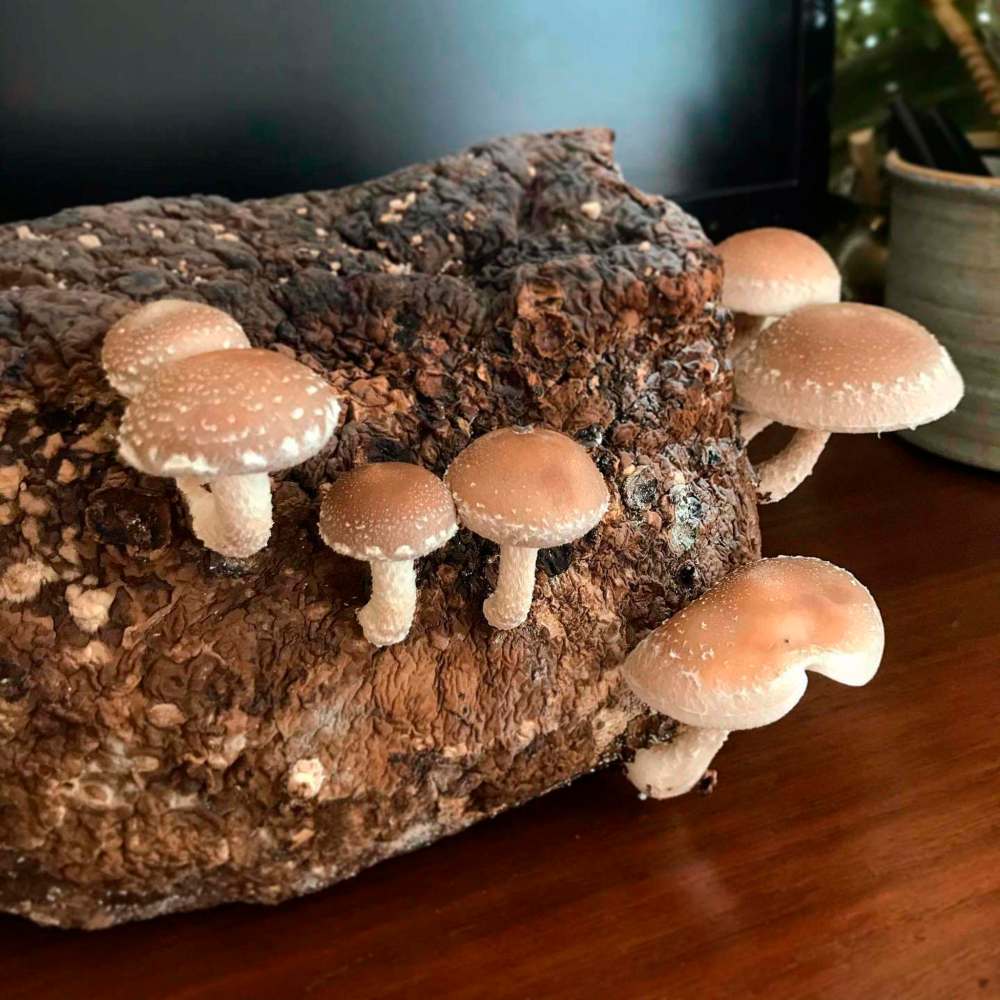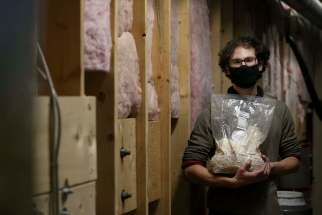He’s a real fungi Entrepreneur hopes to introduce more Manitobans to the magic of home-grown mushrooms
Read this article for free:
or
Already have an account? Log in here »
To continue reading, please subscribe:
Monthly Digital Subscription
$0 for the first 4 weeks*
- Enjoy unlimited reading on winnipegfreepress.com
- Read the E-Edition, our digital replica newspaper
- Access News Break, our award-winning app
- Play interactive puzzles
*No charge for 4 weeks then price increases to the regular rate of $19.00 plus GST every four weeks. Offer available to new and qualified returning subscribers only. Cancel any time.
Monthly Digital Subscription
$4.75/week*
- Enjoy unlimited reading on winnipegfreepress.com
- Read the E-Edition, our digital replica newspaper
- Access News Break, our award-winning app
- Play interactive puzzles
*Billed as $19 plus GST every four weeks. Cancel any time.
To continue reading, please subscribe:
Add Free Press access to your Brandon Sun subscription for only an additional
$1 for the first 4 weeks*
*Your next subscription payment will increase by $1.00 and you will be charged $16.99 plus GST for four weeks. After four weeks, your payment will increase to $23.99 plus GST every four weeks.
Read unlimited articles for free today:
or
Already have an account? Log in here »
Hey there, time traveller!
This article was published 17/12/2020 (1821 days ago), so information in it may no longer be current.
Tom Nagy has mushrooms spawning in the spare bedroom of his West Broadway apartment, at work and in dozens of homes across Winnipeg.
The owner and sole operator of River City Mushrooms has a deep fascination with fungi and a passion for sharing the magic of mycology with others. While many urban mushroom farmers (of which there are a small handful in Winnipeg) grow gourmet shrooms to sell to customers and restaurants, Nagy specializes in making kits for people to grow their own edible mushrooms at home.
“Mushroom growing is a very niche hobby,” he says. “I’m satisfying that desire for… the DIY-ers at heart that want to go a little bit deeper than just going to the farmer’s market to buy their produce.”

The hobby, however, seems to be gaining mainstream appeal during the pandemic.
Nagy, 29, has been teaching workshops locally and selling grow kits part-time under the banner of River City Mushrooms since 2018. His business and social media following have grown steadily over the last two years, but nothing like the uptick he’s experienced in 2020. He sold more than 100 kits — a personal record — this summer and has spent the fall upgrading his equipment to meet demand.
“I think it’s the people that are gardening and into that kind of stuff that are simultaneously also interested in what I have to offer,” he says. “And just people looking for different stuff to do.”
The River City grow kits consist of a 2.25-kilogram bag of sawdust mixed with locally-sourced soybean hulls or spelt bran that has been inoculated with Nagy’s homegrown spawn, which he likens to mushroom seeds. He has jars of oyster, shiitake and other specialty mushrooms germinating in his home lab and a loft workshop above Barnhammer Brewing Co., where he works full-time as a commercial brewer.
While it takes two to four weeks to produce a viable spawn, the resulting mushrooms grow a lot quicker. Once a kit is fully colonized with white mycelium (the body of the fungus that produces mushrooms), the plastic bag is sliced open to introduce fresh air and trigger fruit growth. Depending on the variety, mushroom babies can sprout within 24 hours.

“With oysters, you’ll be harvesting in five or six days and they can almost double in size every day,” Nagy says. “It’s not like when you plant a tree and in, like, 25 years you’ll get some shade out of it or hang a swing from it… you can really see them growing.”
His favourite part of growing mushrooms, besides everything, is inspiring others to join him in the mycological rabbit hole.
“My greatest joy I have in all of this is people sending me photos of the mushrooms that they grew on their kitchen counter or in their backyard,” he says. “Seeing the discovery and being partially responsible for that discovery is just a really, really good feeling.”
Nagy, a self-described “obsessive person,” has always been interested in nature, but mushrooms are a relatively new fixation.
He grew up in Hamilton, Ont., and studied ecosystem management in college. Post-graduation he worked at the Royal Botanical Gardens in Burlington, where he monitored the population dynamics of naturally occurring plants and invasive species, before becoming a field manager at an organic farm.

“(For) anyone that has an interest in the natural world, it’s very difficult to look at one a piece of anything to do with nature, and not simultaneously see how it’s interconnected with everything else,” Nagy says. “It really only was a matter of time, looking back on it now, before fungi and mushrooms kind of entered the picture.”
The mystique and mysticism surrounding fungi is what piqued his curiosity.
“We know far less about their inner workings and how they interact with each other and other living things in the world than we do plants and animals and insects,” he says. “There’s also so much folklore surrounding mushrooms.”
Nagy got his start foraging for wild mushrooms, but his “runaway fascination” took off in earnest when he realized he could cultivate his own varieties.
After moving to Winnipeg with his wife, he bought some equipment and ordered his first batch of liquid culture — a mixture of mycelium and sterile sugar broth used to inoculate different materials with mushroom spores. The cultures are transported in syringes, which made the totally legal process feel very black market.

“The sketchiest thing imaginable is ordering these syringes… in the mail,” Nagy says with a laugh. “I had multiple instances where I was like, ‘What am I doing? Am I on some watchlist now?’”
Passion inevitably overruled the sketchiness factor. Nagy now spends the majority of his spare time growing mushrooms for his own consumption, developing original strains, such as the Wolseley Oyster mushroom, and sharing his self-taught knowledge with the public via workshops and social media.
“I never thought that I would be the kind of person doing public programming or getting up in front of a room full of people,” he says. “But I feel like people need to know about (growing mushrooms).”
River City is currently sold out of grow kits, but Nagy will be taking pre-orders for his next batch in early January. Details at rivercitymushrooms.ca.
eva.wasney@freepress.mb.ca

Twitter: @evawasney


Our newsroom depends on a growing audience of readers to power our journalism. If you are not a paid reader, please consider becoming a subscriber.
Our newsroom depends on its audience of readers to power our journalism. Thank you for your support.







